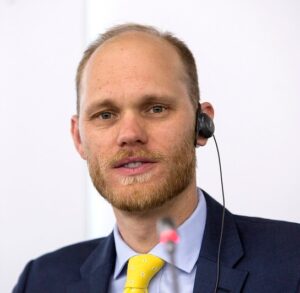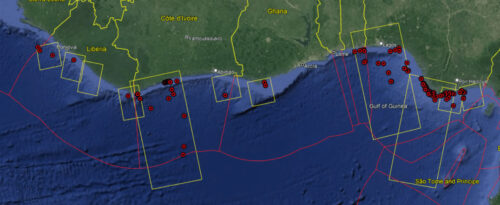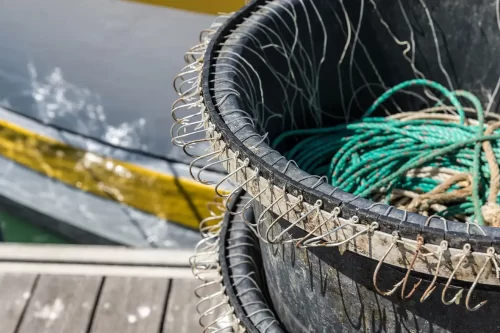Innovative use of data and technology can support the implementation of historic, flagship policies
October 2020 brings the 25th anniversary of the Code of Conduct for Responsible Fisheries (the Code). Developed by the Food and Agriculture Organization of the United Nations (FAO), the Code aims to “strengthen international legal frameworks for more effective conservation, management and sustainable exploitation and production of living aquatic resources.” It provides guidance across ten areas, including fisheries and coastal area research, management and operations, and serves as a voluntary set of measures for flag, coastal and port States.
Responsible fisheries management is integral to achieving Sustainable Development Goal (SDG) 14: Life Below Water. It’s a complex process, but over the past 25 years, the Code has offered guidance that can support efforts in the sector. Research from 2012 shows that States with higher levels of compliance with the Code benefit from increased fisheries sustainability. However, implementation of the Code is made all the more difficult by political, geographic and economic challenges; fisheries lie far from shore, often in areas outside of national jurisdiction. It can be difficult and costly for relevant administrations to monitor, control and survey what happens on vessels out of sight, and manage the fisheries they operate within.
Recent advances and innovations in technology can provide cost-effective, scalable solutions to support government implementation of the Code. At Global Fishing Watch, we believe it’s vital to seize these opportunities. The use of mandatory and publicly available vessel identification and tracking, electronic monitoring of fishing and carrier vessels and revolutionary machine learning algorithms that identify risky behavior are a few examples of such solutions.
In addition to utilizing technology, collaboration will aid in effective fisheries management and the realization of many SDG 14 targets. A concerted approach among coastal, port and flag State governments, science, industry, international governmental organizations and non-governmental organizations will allow a coherent and consistent fisheries management system to be put in place.
Since its adoption in 1995, FAO has led such collaborative efforts implementing the Code. Now, 25 years later, we speak to three experts about the Code’s global impacts and relevance to modern fisheries management:

Dawn Borg Costanzi
Senior Officer
The Pew Charitable Trusts

Dame Mboup
Program Consultant
Global Fishing Watch

Joe Zelasney
Fisheries Officer
FAO
These interviews have been edited for length and clarity.
Q: What was the original aim of the Code of Conduct?
Zelasney: The Code promotes responsible practices – from harvesting to consumption – in the capture fisheries and aquaculture sector. The 1970s brought the introduction of exclusive economic zones (EEZs) and in 1982 the United Nations Convention on the Law of the Sea was adopted – both provided the framework for improved management of marine resources. The new legal regime of the ocean gave coastal States rights and responsibilities for the management and use of fishery resources within their EEZs, which embrace some 90 percent of the world’s marine fisheries.
But many coastal States continued to face challenges in maximizing benefits from the fisheries within their EEZs due to a lack of experience and limited financial and physical resources.
The Code of Conduct establishes principles for fishing and aquaculture and related activities and provides standards of conduct for all persons involved in the sector, including through regional mechanisms and cooperation, and serves as a voluntary reference framework for national and international efforts to formulate policies.
Mboup: The Code took a holistic view of global fisheries. In doing so, it prescribed principles and standards for the conservation and management of all fisheries, and addressed the capture, processing and trade in fish and fishery products, fishing operations, aquaculture, fisheries research and the integration of fisheries into coastal area management.
Q: How has the Code of Conduct impacted countries’ fisheries management?
Mboup: The Code is the only broad international fisheries instrument which signaled, in the mid-nineties, that the time for fundamental changes in the way fisheries are conserved and managed had come. It was clear that if fisheries were to continue providing humankind with protein and other services for future generations, important choices had to be made. The recipes for these choices have been laid down by the Code.
The Code has become a broadly accepted “one-stop-shop” international reference for principles of best management practice in fisheries and aquaculture. The principles of responsible, sustainable, precautionary, and ecosystem-based management of renewable resources have not necessarily been embedded within fisheries, but were brought across into the domain as a package by and through the Code. These principles are widely accepted as management standards in fisheries and aquaculture today thanks to the existence of the Code.
Borg Costanzi: It’s fair to say that developments in fisheries management post-1995 link back to the values of the Code, and it has put significant weight behind the movement to revolutionize fisheries governance. The Code has been guiding fisheries stakeholders towards sustainable management since its inception. And most importantly, we’ve seen States incorporate the Code’s principles and objectives into their national policies and regulations. Numerous States have used the Code as a reference tool, and developed tailored plans of action, implementation guidelines, and so on, at the national level. The Code has also inspired practical improvements to fishing vessel licensing, fisher safety, catch documentation, consultation processes, and much more.
Q: How will innovations in technology support the implementation of the Code of Conduct?
Borg Costanzi: Technology advancements can support implementation of the Code – these capabilities will make it more effective.
Coming from the community fighting illegal, unreported and unregulated (IUU) fishing, this immediately brings to mind mechanisms that support monitoring, control and surveillance and facilitate enforcement, including: remote sensing of vessels at sea and in port; electronic monitoring to complement observers on board; electronic catch documentation to follow product throughout the supply chain; and so on.
Sophisticated analysis techniques and artificial intelligence allow for useful information to be extracted from huge datasets. This helps inform decisions, including enforcement-related ones, to obtain information on fishing fleets and their activities, and therefore to manage fishing capacity – another important element of the Code.
More broadly, electronic information exchange is likely the technology that enables effective implementation of the Code. It supports transparency, so that appropriate authorities gain access to the information they need to fulfil their responsibilities as flag, port, coastal and market States.
But we need to see change at the political level to deliver that effect.
Zelasney: The Code recognizes the importance of technology to the conservation, management, and sustainable use of living aquatic resources, and encourages its adoption and application where appropriate.
Today, an example of how international collaboration and technology is helping improve fisheries management is the Agreement on Port State Measures (PSMA). The PSMA is the first binding international agreement that specifically targets IUU fishing by establishing minimum standards for Parties to apply when foreign vessels seek entry into their ports. It entered into force in 2016 and its application by Parties relies on new and widely available technologies for information sharing.
Another tool developed by FAO is the Global Record of Fishing Vessels, Refrigerated Transport Vessels and Supply Vessels, which is helping to increase transparency in the fisheries sector. Information sharing among countries is one of the most efficient ways to fight IUU fishing.
Q: How can the Code of Conduct support modern fisheries management today and in future?
Borg Costanzi: This year, as we celebrate 25 years of the Code, it continues to provide a backbone for work towards achieving sustainable fisheries and aquaculture. The Code was designed to provide broad and overarching guidelines, and it remains relevant today.
Where particular issues have needed more specific standards, dedicated instruments have been established under the framework of the Code, including international plans of action (such as those more recently developed on IUU fishing, sharks, and seabirds), strategies on information, international guidelines (such as those on flag State performance and catch documentation schemes), and technical guidelines –from the earliest ones on the precautionary approach, coastal area management, and fisheries operations to the more recent guidelines covering aquaculture governance, and safety at sea.
With so many guidelines, treaties, commitments and initiatives, we must not lose sight of the intent of the Code: that people work together, across national boundaries, to ensure that fish is being caught and used responsibly.
Zelasney: Core areas of FAO’s mandate in fisheries and aquaculture include supporting the development of standard-setting instruments such as: international agreements, codes of conduct, and voluntary guidelines; policy dialogue at global, regional and national levels; and capacity development to enact evidence-based policies and implement international instruments. And this is done on a continuous basis. Over the past 25 years, the Code has informed the development of a suite of instruments that collectively constitute the overarching framework for international, regional, and national efforts to utilize fisheries and aquaculture resources sustainably and responsibly.
Policies such as the Code have been around for decades. While they have been highly influential in the way fisheries are managed, challenges in their global implementation remain. By utilizing recent innovations in technology and committing to collaboration, countries can effectively implement the Code and associated policies to conserve and sustainably use life below water.
Courtney Farthing manages the transparency program at Global Fishing Watch.


